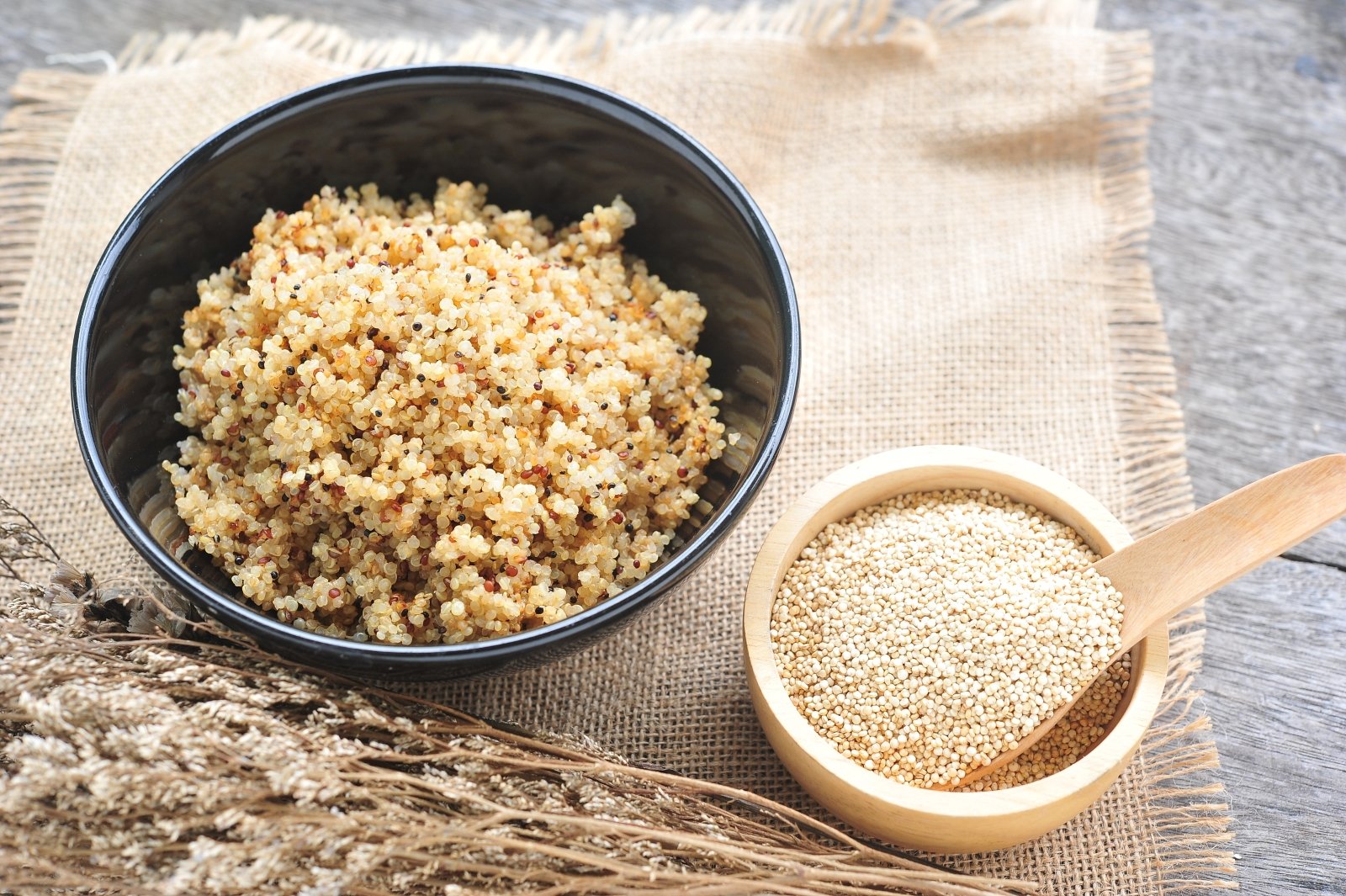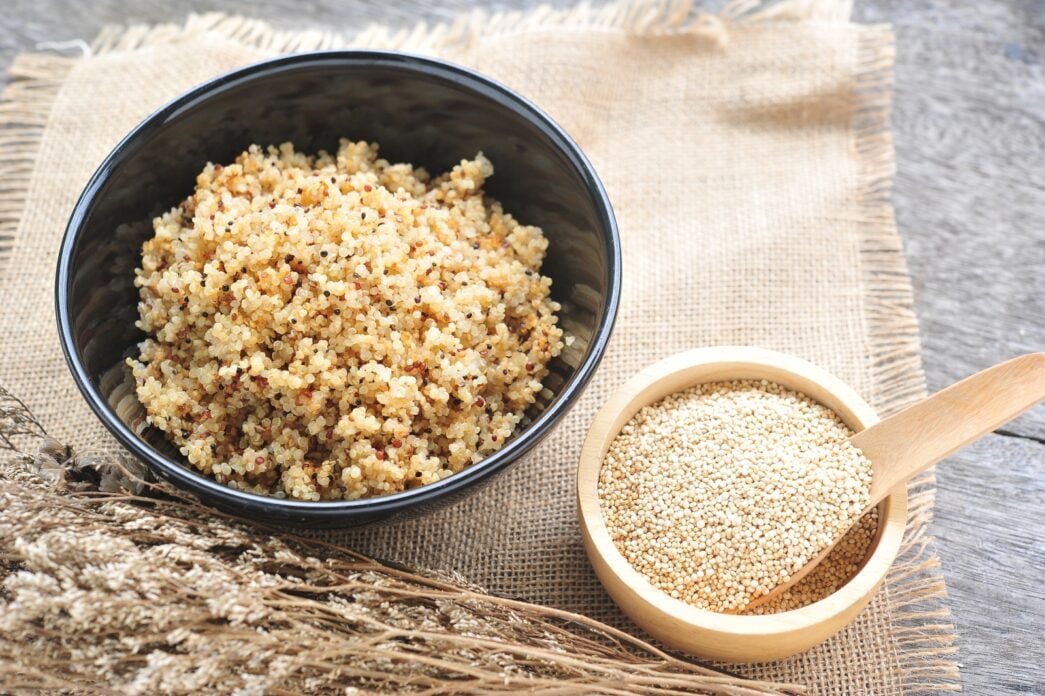Quinoa
BY OLUWADARA ALEGBELEYE
Walk into any upscale grocery store in Lagos or Abuja, and you’ll likely find quinoa—imported, expensive (maybe overpriced even), and packaged as a “global superfood.” In some cases, you’d even find it sitting proudly beside imported olive oils and organic chia seeds. Grown primarily in the Andean highlands of Peru and Bolivia, this protein-rich grain has become a staple in health-conscious diets worldwide.
This is not a critique of quinoa, but I do not think that we should be importing quinoa when we have our own nutritional powerhouses. As an aside, quinoa may thrive in regions like the Jos Plateau, but this remains untested and isn’t the focus here. If the goal is healthier, sustainable, and affordable nutrition, I think we should first look to our own soil.
An introduction to Nigeria’s indigenous superfoods
Advertisement
Nigeria grows plenty of nutrient-packed, drought-resistant crops that are just as versatile as quinoa and are maybe even tastier!
Fonio, for instance, is rich in amino acids like methionine and cysteine — essential compounds that are not typically found in cereal crops. It is gluten-free, digestible, and grows well in marginal soils under low rainfall.
Bambara groundnut, cultivated mainly in the south-east and middle belt, is both protein-rich and drought-tolerant. It also fixes nitrogen in the soil and can thus contribute to sustainable agriculture.
Advertisement
Pearl millet and tigernut, both widely cultivated in the north, are rich in essential nutrients. Tigernut, in particular, has great potential to thrive in the global plant-based beverage market. The issue, therefore, is not whether these crops are useful; it is why they continue to be overlooked.
Beyond the farm: Why quinoa thrived
The success of quinoa is not purely botanical. Its rise as a ‘superfood’ was driven by strong scientific research, strategic promotion, and global narratives linking it to health and food security. For example, the United Nations declared 2013 the “International Year of Quinoa,” praising its contribution to sustainable agriculture and food security. That declaration arguably contributed to quinoa’s thrust into mainstream global consciousness and drove investment in its cultivation, processing, and marketing.
By contrast, crops like fonio and millet have remained entangled in outdated stereotypes. For example, in many parts of Nigeria, fonio is often perceived as “poor people’s food.” While I feel that it is important to explore and properly understand the factors that hinder policy focus and private sector interest in these high-quality indigenous foods, without deliberate rebranding and research investment, even the most promising indigenous crops cannot compete on the global stage.
Advertisement
The case for strategic intervention
If Nigeria is serious about diversifying its food systems and enhancing nutritional security, then we must stop treating local crops as historical artefacts and start treating them as economic assets. This requires action in at least four key areas:
Scientific validation: Rigorous research is essential to document the nutritional and agronomic potential of Nigeria’s indigenous crops. While anecdotal claims may be compelling, only robust scientific evidence can drive market adoption and policy change.
Agroecological trials: Systematic trials across Nigeria’s agro-ecological zones, not only for yield potential but also for climate resilience, are required. Critical evaluations must assess their performance in degraded soils, arid conditions, and other marginal environments where conventional crops normally fail. We should rigorously test drought tolerance, nutrient efficiency, and low-input adaptability to verify their potential to achieve climate-smart agriculture goals.
Advertisement
Policy and infrastructure support: Agricultural policies must prioritise these crops, not only at the production level but also in processing, branding, and market integration. For instance, fonio’s labour-intensive postharvest process can be addressed with targeted investments in processing technologies.
Branding and market access: Rebranding is essential. Nigeria’s indigenous crops could be marketed as premium, health-forward options. Tigernut milk, fonio cereal, amaranth grain bars, etc., already exist in small numbers. The challenge is scale and positioning.
Advertisement
A global market within reach
The global appetite for alternative grains is rising. From Berlin to Brooklyn, consumers are looking for foods that are sustainable, ethical, and nutritionally rich. If Peru and Bolivia could transform quinoa into a multi-billion-dollar export commodity, then Nigeria can do the same with fonio, tigernut and others, if we act strategically.
Advertisement
To be clear, this is not a call to reject foreign foods. It is a call to elevate what we already have. Nigeria’s indigenous crops are not inferior substitutes; they are legitimate competitors that could benefit from the right ecosystem of support.
In the end, we don’t need to chase quinoa or any other glossy import superfood. We rather need to cultivate pride, research, and opportunity around our own grains. And in doing so, we position ourselves not just as consumers of global trends, but as contributors to them.
Advertisement
Oluwadara Alegbeleye is a microbiologist and science communicator. She holds a Ph.D. in Food Science from the University of Campinas, São Paulo. Her research focuses on food safety, microbial risk assessment, and sustainable food systems. You can contact her via [email protected]
Views expressed by contributors are strictly personal and not of TheCable.


